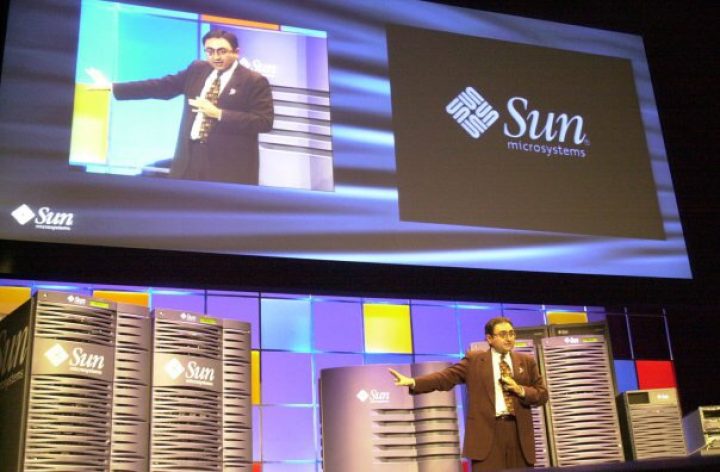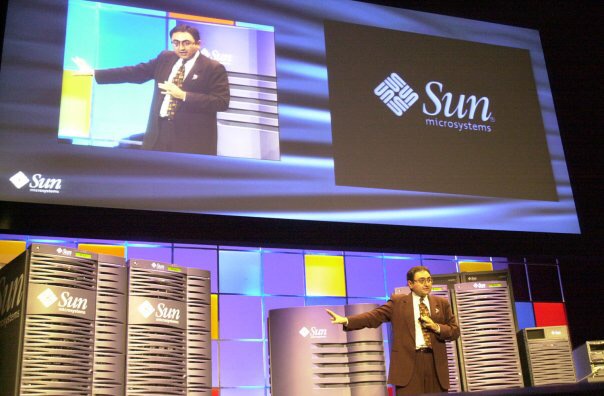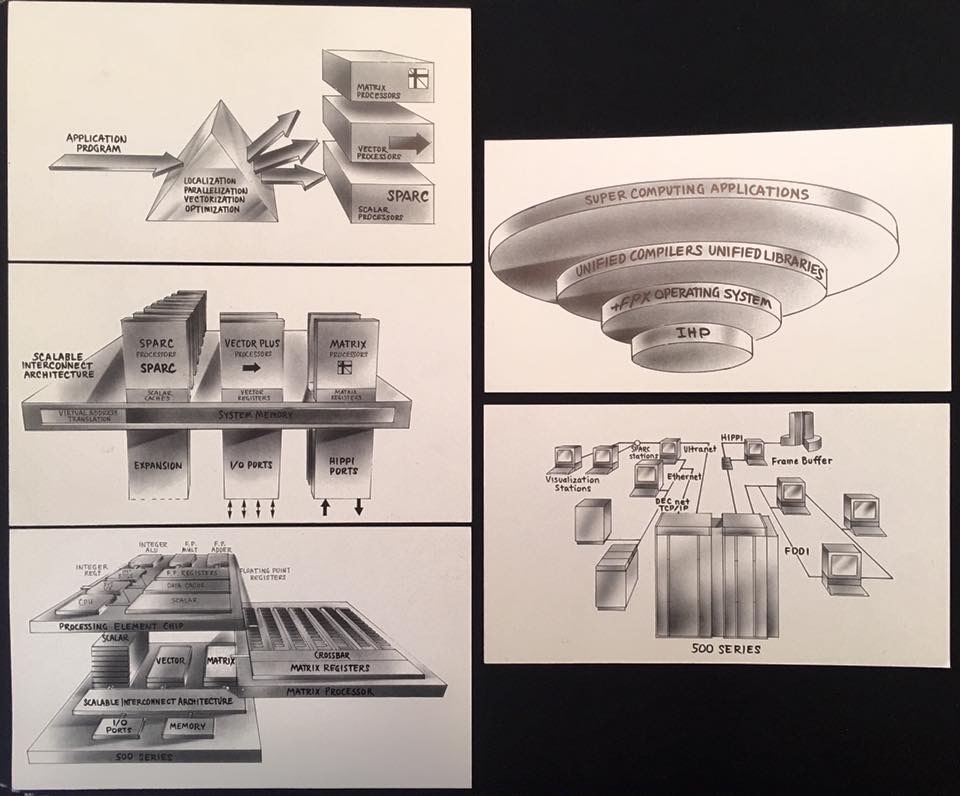
Surviving Disruption (Part 3): Supercomputers, Floating Point Systems and Sun Microsystems

Supercomputers had been invented by Seymour Cray, were assisted in spread by floating point co-processors, then grew through a set of “mini-supercomputer” manufacturers. All was fine until the early 1990s when the industry was disrupted (in a classic example of a Christensen disruption).
From 1987 to 1991 I was fortunate to be a sales engineer, salesman and manager of international marketing for Floating Point Systems (FPS) who was started by a former Tektronix team and it’s first major products were attached floating point processors. Over time they expanded to a far bigger processors which operated attached to a DEC VAX front end and a multi-processor version which played a major role crunching radar signatures in stealth analysis. FPS finally moved into the pure Unix mini-supercomputer market with the purchase of Celerity Computer in San Diego, CA.
Ironically my first day at FPS was 1987’s Black Monday — really — an excellent precursor to a tremendous job. (I now rather like anti-superstitious events.) The FPS team included an incredible set of executives and colleagues. And, I was able to be deeply involved with the Celerity offering and the superb staff which had come with the acquisition.
By 1991 we has committed to a key strategic shift where we would build around a SUN/SPARC compatible processors and an architecture based on the Sun OS and applications. We were looking for significant advantage against a tough group of competitors.
Then disruption arrived — in the form of computers based on high speed integrated chip sets.
Where an FPS customer needed to spend, say, $800K to get a solidly operable system, in the early 1990s we started to see integrated chip set based systems offered by Silicon Graphics and others which ran at similar scalar speeds, somewhat slower on an overall scientific code, yet a solid system cost a mere $250K.
Suddenly we were faced with selling a marginally faster $800,000 computer requiring a computer room with halon fire suppression against a $200,000 computer that sat
next to a scientist’s desk and was more reliable than our big iron (due to fewer chips). But FPS wasn’t alone in facing these challenges. Convex and other manufacturers faced the same bad situation.
The result was that over roughly 2-3 years the supercomputer business evaporated. FPS was bought by Cray but Cray was bought by SGI. Convex was bought by Compaq (to their dismay).
Disruption moralists would claim our team was stupid and caught flat footed. They weren’t.
In my role pitching the computers internationally, I was in close contact with our engineers and know they were right on top of the shift to IC chip sets. Quite often I was the carrier of the latest architectural plans into meetings with A-list clients in Europe, Japan, and Korea. Our engineers and executives knew how critical it would be to shift — but it was extraordinarily expensive.
In the end, we couldn’t afford to take advantage of them. Huge investment was required yet we were a low unit volume, high margin company. SGI, by contrast, was already a lower margin, higher volume supplier and were able to spread that investment successfully.
Take note here. One of my constant frustrations is the idea put forth by disruption enthusiasts than any company can simple change their financial base in minutes. It doesn’t happen that way. FPS COULD have switched to IC chip sets. But there was a very high initial investment needed. Where SGI could spread that across thousands of units, we were spreading it across tens of units. Economically that didn’t make sense. And our sales force, for example, was designed around the fighter pilot type of sales folks who could woo and close multi-million dollar single machine purchases that evolved over a year or two. We were NOT set up to sell mass unit volume.
The FPS Story Is Fulfilled at Sun Microsystems
So FPS couldn’t compete — but neither, as I note above, could Cray or Hambrecht & Quist poster child Convex (who leapt aboard the sinking Compaq ship).
In 1991 FPS declared bankruptcy and their assets were bought by Cray, who was bought by SGI who sold the FPS operation, now based on the Unix Celerity architecture, to Sun Microsystems because of the SPARC architecture. Folks like my good friend Shahin Khan hung in with the FPS team, went to Cray then continued their work at Sun.

Shahin Khan, FPS colleague, HPC expert and, at this time, VP-Strategy at Sun with some big iron.
AND THEN…Sun embraced the FPS team for what they did well — building “big iron” UNIX machines. The former FPS team pivoted these strengths to business computing. And through Sun they obtained sufficient funding to make Sun’s high end servers throughout the 1990s.
They did ok. Like $8 billion of ok from what I’m told. That’s right, they sold $8 billion (with a “B”) worth of big iron during the 1990s. How? Their pivot was in the direction of their strengths instead of chasing the market to the bottom.
Faced with disruption rely on your strengths
Up against the tendency to double down on your market, it makes tremendous sense for companies faced with disruption to fall back on key strengths.
After all, disruption is a market force — a force which destroys the profit structure in a market and replaces it with a new one. Most often it seems to replace higher margins with lower margins (usually with higher volume). Sometimes it turns small unit volume markets into high unit volume markets (as with the FPS example).
Chasing a market that is evolving into something radically different doesn’t make sense. But that’s no surprise.
It’s also no surprise to believe the way to success is through strengths. Doing that, though, the key may be the ability to set back and see your company clearly — to identify strengths which offer a way forward.
Do that and disruption can be survived — your company might even thrive afterward.
©2019 Doug Garnett — All Rights Reserved
Categories: Business and Strategy, Complexity in Business, Human Tech, Innovation, Uncategorized

